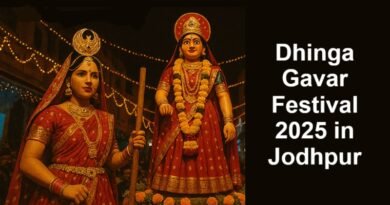
April Fools’ Day: Pranks, Origin, History, Meaning, & Facts
Introduction
April Fools’ Day, celebrated on April 1st every year, is a lighthearted occasion marked by jokes, pranks, and hoaxes. Around the world, people play practical jokes on friends, family, and even institutions, often with the goal of tricking them into believing something false. While it is widely recognized today, the origins of April Fools’ Day remain shrouded in mystery. This article delves deep into the history, meaning, and significance of this fun-filled tradition, along with notable pranks and interesting facts.
Origins and Historical Background
The exact origins of April Fools’ Day are uncertain, but several theories attempt to explain its inception:
1. The Change in Calendar (1582)
One of the most widely accepted theories links April Fools’ Day to the Gregorian calendar reform in 1582. Before this change, Europe followed the Julian calendar, in which the new year was celebrated around April 1st. When Pope Gregory XIII introduced the Gregorian calendar, shifting the new year to January 1st, many people either did not know about the change or refused to accept it. Those who continued celebrating New Year’s Day on April 1st were mocked and tricked by others, giving rise to the tradition of playing pranks.
2. Medieval Festival of Fools
In medieval Europe, festivals such as the Feast of Fools (held around January 1st) involved merrymaking, social role reversals, and playful mockery. Some historians believe April Fools’ Day evolved from these festivities, extending the spirit of humor and inversion of social norms to a specific date in April.
3. Ancient Roman Festivals
Some scholars suggest that April Fools’ Day has roots in ancient Roman celebrations like Hilaria. Observed in late March, Hilaria was a festival dedicated to the god Attis, during which people wore disguises and played pranks. The similarity in theme suggests that April Fools’ Day might have drawn inspiration from these older traditions.
4. The Canterbury Tales Theory
A literary reference to foolishness on April 1st appears in Geoffrey Chaucer’s The Canterbury Tales (1392). In the “Nun’s Priest’s Tale,” Chaucer describes an event occurring on “32 March,” which some scholars interpret as April 1st. Although it may have been a scribal error or a joke itself, some believe this reference contributed to the holiday’s development.
How April Fools’ Day is Celebrated
April Fools’ Day is widely recognized in various countries, each adding its own unique spin to the tradition.
Common Pranks and Hoaxes
People worldwide engage in pranks that range from harmless jokes to elaborate hoaxes. Some classic pranks include:
- Fake News Announcements: Newspapers and media outlets publish false stories, revealing the prank only at the end.
- Trick Objects: Items such as exploding pens, fake spiders, or whoopee cushions surprise the unsuspecting victim.
- Food-Based Pranks: Filling donuts with mayonnaise instead of cream or serving salt instead of sugar in coffee.
- Office Pranks: Covering a coworker’s desk in sticky notes or swapping keyboard keys.
- Tech Pranks: Changing autocorrect settings on a friend’s phone or setting up fake software crashes.
Famous April Fools’ Day Pranks in History
Over the years, some of the most memorable and well-orchestrated pranks have been carried out by media organizations and brands:
1. The BBC’s Swiss Spaghetti Harvest (1957)
The British Broadcasting Corporation (BBC) aired a segment about Swiss farmers harvesting spaghetti from trees. Many viewers believed the story, calling the network to inquire about growing their own spaghetti trees.
2. The Left-Handed Whopper (1998)
Burger King published an advertisement in USA Today announcing a new burger designed for left-handed people. The prank worked so well that many customers requested the special Whopper.
3. Google’s Elaborate Hoaxes
Google has become famous for its annual April Fools’ jokes, such as the 2013 launch of “Google Nose,” which claimed to allow users to search for smells online.
4. Taco Bell Buying the Liberty Bell (1996)
Taco Bell announced that it had purchased the Liberty Bell and renamed it the Taco Liberty Bell to help reduce the national debt. Many Americans were outraged until the company revealed the joke.
Cultural Variations
April Fools’ Day is celebrated differently around the world, with some countries observing unique customs:
- France & Italy: Known as Poisson d’Avril (April Fish), people tape paper fish onto unsuspecting victims’ backs.
- Scotland: In Scotland, April 1st was traditionally called “Huntigowk Day,” where people were sent on absurd errands.
- India: April Fools’ Day is popular, especially among students and office workers who enjoy playing pranks.
- Spain & Latin America: While not on April 1st, a similar tradition called Día de los Santos Inocentes is celebrated on December 28th.
Interesting Facts About April Fools’ Day
- The holiday is not a public holiday anywhere, but it is widely celebrated in many countries.
- April Fools’ Day jokes should end by noon in some traditions, such as in the UK, where pranks after midday are considered bad luck.
- Corporate April Fools’ pranks can backfire, as seen when companies mislead customers too well, causing confusion.
- Psychologists study April Fools’ Day pranks to understand humor, deception, and human gullibility.
- Some governments and institutions participate, including the military and official agencies releasing fake statements on April 1st.
Conclusion
April Fools’ Day is a time for laughter, creativity, and harmless mischief. Whether through simple jokes among friends or elaborate hoaxes by corporations and media outlets, the tradition remains deeply embedded in many cultures worldwide. While its origins remain uncertain, its spirit of humor and surprise continues to bring joy to millions every year. Just remember—don’t believe everything you hear on April 1st!






